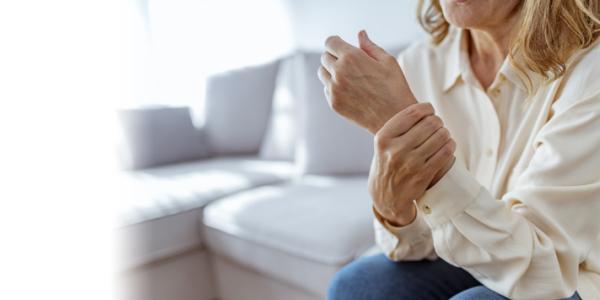
Learn the difference between chronic and acute inflammation — and how you can treat it with simple lifestyle modifications.
If you have ever twisted your ankle or cut your hand, you have experienced inflammation. Inflammation is your body’s natural response to injury or infection — a defense mechanism that triggers your immune system to begin the healing process. However, sometimes inflammation can last well after your ankle feels better or your cut is healed, and the lingering symptoms can cause additional health concerns.
Skip
Types of Inflammation
There are two types of inflammation: acute, meaning it’s brought on quickly and is usually short-lived, or chronic, which can persist for months or even years if your immune system fails to fix the initial problem. When your body is injured, your immune system typically acts quickly to repair the injury, causing acute inflammation symptoms to dissipate. However, if signs of inflammation — such as pain, redness, swelling and heat around the injury site — remain long after you have recovered from the initial injury or infection, you may be dealing with chronic inflammation.
Treating Inflammation
Over time, chronic inflammation can trigger your immune system to attack healthy tissue and organs in your body. When left untreated, prolonged chronic inflammation can increase your risk for diseases like diabetes, heart disease, cancer and rheumatoid arthritis. Since inflammation signs and symptoms often go undetected, it's important to have regular doctors visits and inform your physician if you are experiencing signs of possible inflammation.
Acute inflammation can often be treated with nonsteroidal anti-inflammatory drugs — or NSAIDS — such as aspirin and ibuprofen. These drugs can alleviate short-term pain caused by acute inflammation, but should not be used long-term. Alternately, chronic inflammation is typically treated with corticosteroids like cortisol, which can be prescribed by your doctor. Corticosteroids come in the form of creams, ointments, tablets or injections and should be taken routinely — for weeks or sometimes months — until symptoms lessen or subside.
Lifestyle Modifications
Your risk of chronic inflammation is associated with a variety of health factors like diet, lifestyle and family history. Knowing these factors can help you make proactive lifestyle changes to avoid, reduce or even reverse inflammation in your body. Consider which of these lifestyle tips you can implement in your own life to reduce or avoid chronic inflammation:
- Eat anti-inflammatory foods. The food that you put in your body is just as important as the vitamins and supplements you take. Eating anti-inflammatory foods helps reduce your risk of inflammation while also promoting a healthy, balanced diet. Anti-inflammatory foods contain high levels of omega-3 fatty acids, which can be found in fish, tofu, walnuts and soybeans among others. A great example of an anti-inflammatory diet is the Mediterranean diet, which focuses on fruits, vegetables, refined sugar and limited carbs.
- Eliminate inflammatory foods. It’s also important to limit (or completely eliminate) foods that aggravate inflammation such as red meat, processed sugar and fried foods. A good rule of thumb: avoid white foods including white bread, rice, pasta, sugar and flour. These foods are simple carbohydrates that should be consumed in moderation.
- Exercise regularly. Carrying excess body weight due to fat increases your risk of inflammation. Maintaining a healthy weight not only helps prevent inflammation, but can even reverse it. To maintain a healthy body weight, try committing to a regular exercise schedule. We recommend 20 to 45 minutes of vigorous, heart-pumping exercise like jogging or biking and 10 to 25 minutes of resistance or weight training four to five times per week.
- Manage your stress levels. Believe it or not, chronic stress is a contributing factor to inflammation. Unfortunately, you can’t always change stressful situations in your life, but you can still control how you react to them. With practice, taking measures to manage your stress can pay off by minimizing inflammation, improving your overall health and reducing your risk of other chronic diseases. Try using meditation, yoga, or guided imagery to manage your stress throughout the day.
The first step to addressing inflammation is practicing a healthy lifestyle by eating a healthful diet and staying active. These lifestyle modifications are the best approach to reducing your risk of inflammation and initiating the reversal process. If you are concerned about your risk of inflammation or think you may already be experiencing symptoms of chronic inflammation, talk to your doctor about blood tests to determine inflammatory markers, as well as ways to reduce inflammation.
This article first appeared in the May 2020 edition of the HealthPerks newsletter.

